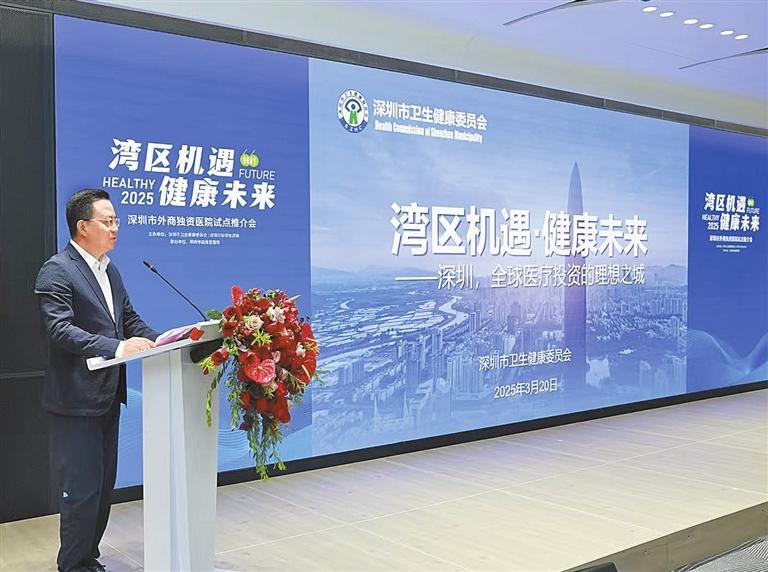
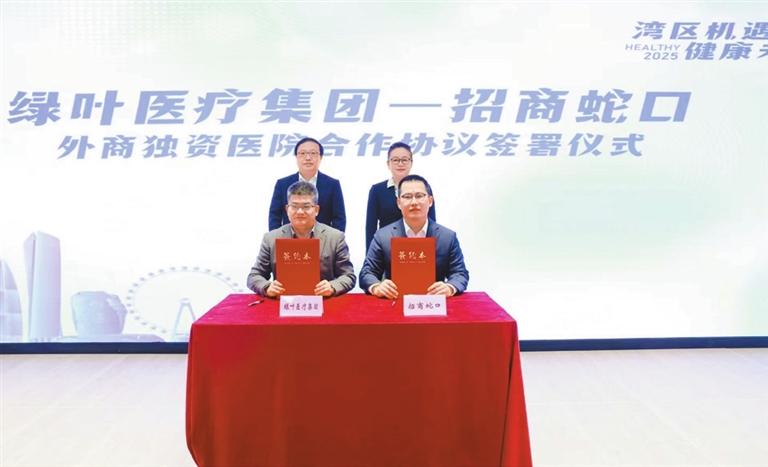
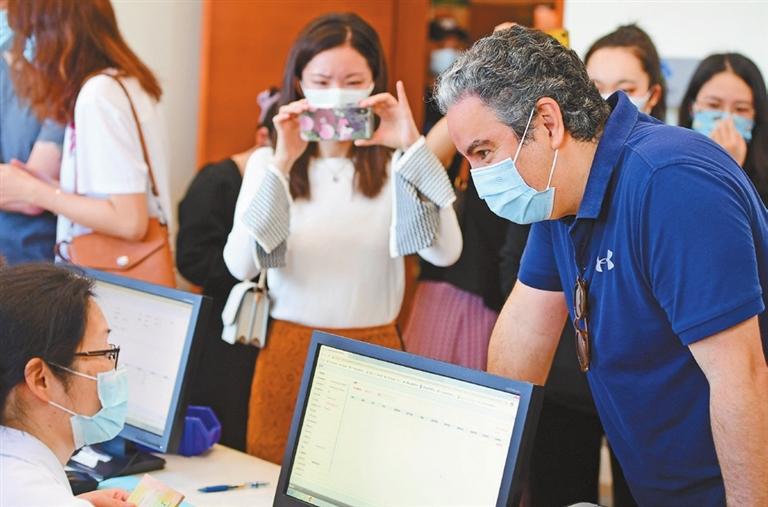
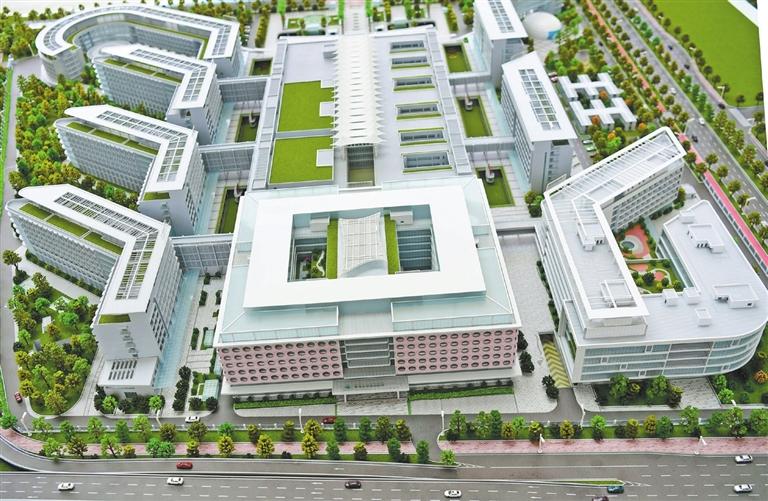
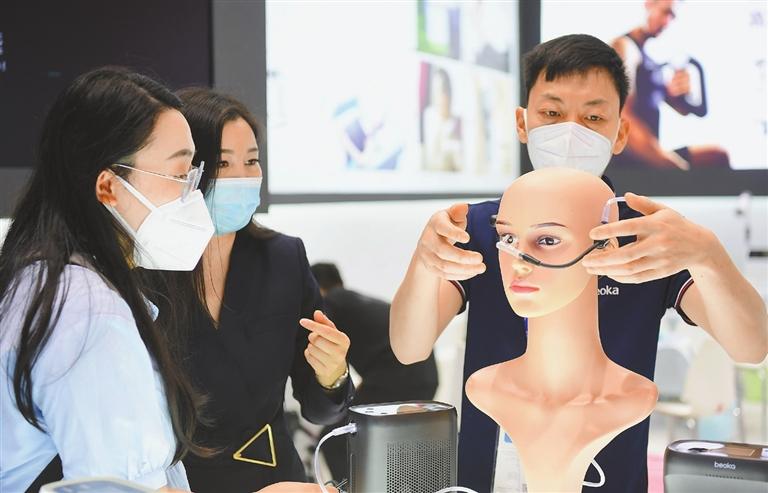
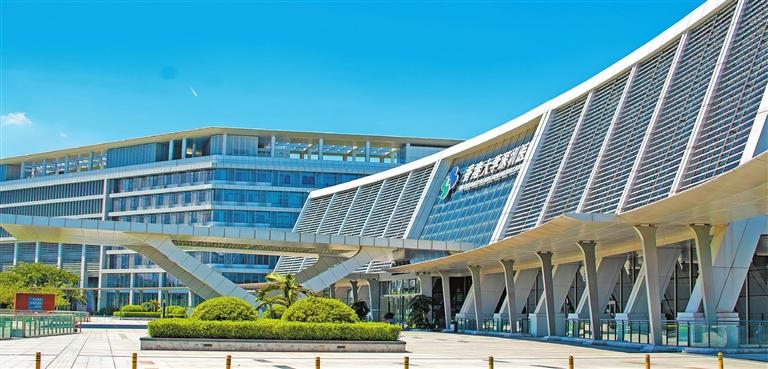
Zhang Yu JeniZhang13@163.com SHENZHEN has rolled out its red carpet — a sweeping package of measures — to attract wholly foreign-owned hospitals. The 26 targeted measures, unveiled at a presentation event in Qianhai on March 20, address everything from land security, enhanced financial support, optimized medical insurance policies, and facilitation of cross-border practice to international medical settlement. These measures can be seen as a gambit to address the city’s rising demand for high-quality medical services, boost cross-border collaboration, and cement the tech-driven metropolis as a leader in the Guangdong-Hong Kong-Macao Greater Bay Area’s (GBA) health care ecosystem. Getting a head start In September 2024, the Ministry of Commerce, the National Health Commission, and the National Medical Products Administration jointly issued a pivotal notice on broadening the scope of pilot programs in the medical sector, granting cities including Shenzhen the opportunity to establish wholly foreign-owned hospitals. Following this, in November 2024, China unveiled a pilot work plan that delineated the precise criteria for the establishment of such hospitals. Just a month later, the Shenzhen Municipal Public Hygiene and Health Commission signed a strategic cooperation agreement with the Singapore-headquartered Luye Medical Group during the 2024 Shenzhen Global Investment Promotion Conference, paving the way for the construction of the first wholly foreign-owned hospital in the city. This project marked a significant milestone as the first of its kind to materialize in China following the introduction of the pilot work plan. According to the city’s health authority, Luye Medical Group secured the business license for its wholly foreign-owned hospital in Qianhai on Jan. 3. At present, the group has confirmed the site for this cutting-edge, specialized medical facility. “Shenzhen’s pioneering spirit is an important reason why we chose the city,” said Chen Jinzhong, chief representative of Luye Life Sciences Group in the GBA. According to Chen, the group’s pharmaceutical arm has introduced a drug for the treatment of small cell lung cancer at the Shenzhen Qianhai Shekou Free Trade Zone Hospital through the Hong Kong and Macao Medicine and Equipment Connect policy. He added that Shenzhen’s flexible policies have streamlined the establishment of medical institutions by leveraging existing industrial spaces and allowing investors to bypass the typically cumbersome procedures, allowing projects to be swiftly initiated. “It also helps investors in curbing property investment costs, enabling them to focus on medical equipment procurement, top-tier talent recruitment, and technological advancements,” Chen noted. Easing barriers for foreign hospitals Addressing the prevalent concern regarding the eligibility of wholly foreign-owned hospitals for medical insurance, Shenzhen has clarified its stance. Under the new policies, the city not only grants these hospitals the freedom to set their own prices for medical services but also provides an opportunity for qualified wholly foreign-owned hospitals to apply for inclusion in Shenzhen’s medical insurance system. In the realm of land use, Shenzhen demonstrates flexibility by permitting the establishment of wholly foreign-owned hospitals beyond the confines of the city’s medical institution planning. For foreign-funded hospital projects that align with regulatory criteria, the city will determine the minimum land transfer price in line with its industrial policies and land valuation guidelines. To sweeten the deal, foreign-owned hospitals are permitted to repurpose commercial, office, and industrial buildings that meet the necessary standards for medical establishment and practice. They may also acquire and lease government-owned buildings designated for medical use that have not become operational. Shenzhen also supports foreign-invested enterprises in legally obtaining ownership and operational rights of existing private medical institutions through various means, including acquisition, merger, and leasing. The city has streamlined the registration and approval process for foreign doctors hoping to practice in Shenzhen, allowing eligible professionals to apply for professional title assessment. Additionally, it supports wholly foreign-owned hospitals in applying for the use of medicines and medical devices under the Hong Kong and Macao Medicine and Equipment Connect policy. Local needs and global expertise For foreign-owned hospitals, Shenzhen exudes a magnetic allure with a permanent population of 17.79 million, 85,000 high-net-worth households – those with investable assets of over 6 million yuan (US$827,760) – and some 233,000 expatriates and compatriots from China's Hong Kong, Macao, and Taiwan. The city boasts a vast consumer market and a significant international presence. Shenzhen’s influence extends beyond its borders, reaching 34.15 million people within the Shenzhen metropolitan circle and an impressive 86.29 million across the GBA. It also has direct links to over 50 international cities via an extensive network of land, sea, and air routes. Last year, Shenzhen recorded over 1 million patient visits from overseas individuals seeking medical treatment, official data show. The integration of wholly foreign-owned hospitals is expected to enhance and complement the existing medical infrastructure in Shenzhen. These establishments will fill gaps in the city’s health care system, offering specialized services and diverse treatment options that cater to a broader spectrum of patient needs. “The introduction of wholly foreign-funded hospitals not only mitigates the operational strain on public hospitals but also diversifies the medical service landscape,” said Guo Wanda, executive vice president of the China Development Institute. Data released by the city’s health authority reveal a telling picture – currently, Shenzhen is home to 12 Hong Kong-funded medical institutions that constitute 40% of the total in Guangdong Province. Moreover, 509 medical professionals from Hong Kong, Macao, and Taiwan have secured medical practice certificates and have been delivering long-term services in the city. The city has been authorized to use 62 types of imported drugs and medical equipment that are critically needed in clinical settings. Additionally, 10 public hospitals have implemented direct settlement services for international commercial insurance. Guo noted that much like The University of Hong Kong-Shenzhen Hospital, which commenced operations in 2012, the establishment of foreign-funded hospitals in Shenzhen is anticipated to generate spillover effects in technology, management, and service delivery models. “We are promoting Portugal’s Luz Saúde to establish a presence in Shenzhen,” Hu Hang, CEO of Shanghai-based Fosun Health, was quoted as saying. Luz Saúde is a leading private health service provider in Portugal that operates under the umbrella of Fidelidade, a distinguished Portuguese insurer that is itself a subsidiary of the global conglomerate Fosun International. Hu revealed that Luz Saúde has finalized the site selection process in Shenzhen and is poised to complete registration in the first half of this year. | 
